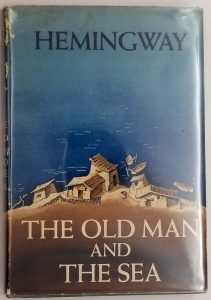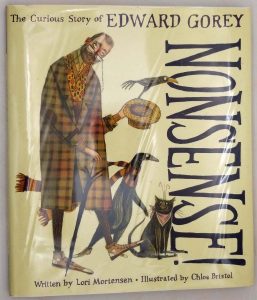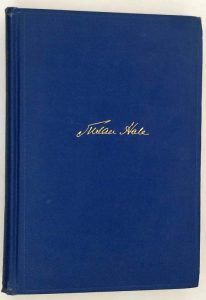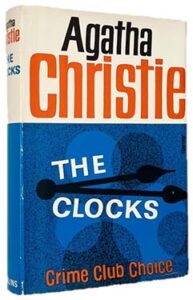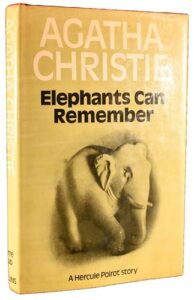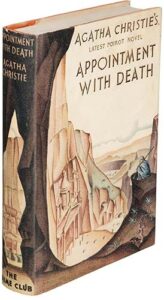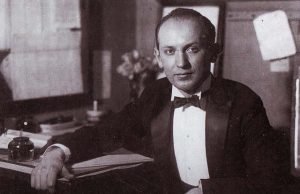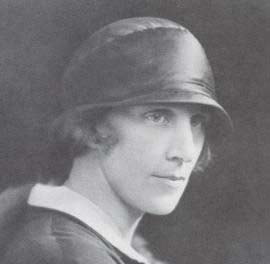The Clue in the Jewel Box is the twentieth volume in the Nancy Drew Mystery Stories series. It was first published in 1943 under the pseudonym Carolyn Keene. The actual author was ghostwriter Mildred Wirt Benson.
Summary (original edition)
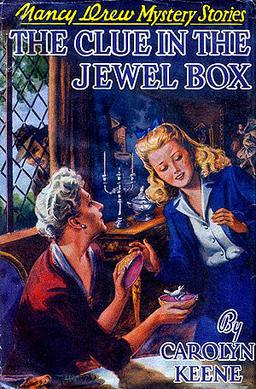
In The Clue in the Jewel Box , a faded Russian aristocrat’s heirloom jewelry box unlocks a sweeping immigrant saga in this poignant wartime mystery that finds Nancy Drew navigating the precarious world of displaced European royalty. The story begins when Nancy befriends elderly Madame Alexandra, a once-wealthy Russian refugee now living in reduced circumstances in River Heights. The grand duchess believes her missing grandson—the rightful heir to their family fortune—may be living somewhere in America under an assumed identity, with only a distinctive jewelled locket as proof of his lineage.
Nancy’s investigation weaves through the tapestry of immigrant experience—from the backrooms of Manhattan jewelers who discreetly buy family heirlooms from exiled nobility, to the cramped apartments where former aristocrats teach music and languages to survive. The jewel box itself yields cryptic clues: a hidden compartment containing a map of St. Petersburg’s waterways, a scrap of revolutionary-era sheet music with marginalia in Imperial Russian code, and the lingering scent of rose attar masking something more sinister.
The danger intensifies when Nancy realizes someone is systematically eliminating claimants to the family’s rumored surviving assets. She narrowly escapes poisoning from a doctored tea service, deciphers messages in Fabergé enamelwork, and follows the trail to a fraudulent “grand duke” running an elaborate inheritance scam targeting vulnerable refugees. The 1943 original pulses with wartime empathy, showcasing Nancy’s respect for European customs while exposing how desperation makes immigrants easy prey.
This edition stands out for its unflinching portrayal of White Russian émigrés—the matriarch’s trembling hands as she polishes fake jewels, the former cavalry officer working as a doorman, the way characters measure time not in years but “since the Revolution.” Unlike later revisions that softened the political context, this version retains Nancy’s fiery confrontation with exploiters capitalizing on refugee trauma. The jewel box itself becomes a profound symbol—its chipped lacquer and empty velvet compartments testifying to how thoroughly the world can change, while its hidden mechanisms prove some truths remain waiting to be discovered.
Nancy Drew #20 –The Clue in the Jewel Box First Edition Book Identification
Only the first few printings of the first/second year are shown. Printings codes are based on the Farrah Guide, 12th printing. Please refer to the guide for later printings.
| Printing | Frontis | Copyright Page | Rear Book Ads |
|---|---|---|---|
| 1943A-1 | Plain | No List | None|Thick Printing |
| 1943B-2 | Plain | No List | None/Semi-thick |
| 1943C-3 | Plain | No List | None |
Nancy Drew #20 The Clue in the Jewel Box First Edition Dust Jacket Identification
| Printing | Price | Front Flap | Rear Panel | Rear Flap | Format |
|---|---|---|---|---|---|
| 1943A-1 | 5050 | Nancy Drew #1-19 | Judy Bolton #1-15 | Dana Girls #1-10 | 5 |
| 1943B-2 | 5050 | Nancy Drew #1-19 | Judy Bolton #1-15 | Dana Girls #1-11 | 5 |
| 1943C-3 | PJC | Nancy Drew #1-19 | Judy Bolton #1-15 | Dana Girls #1-12 | 5 |
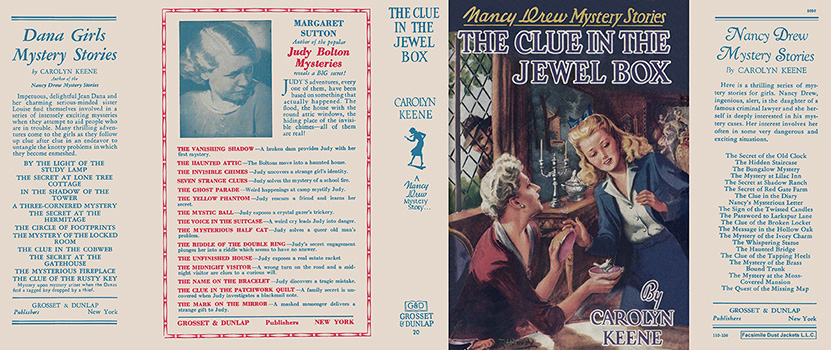
Reference:
- Farah’s Guide to Nancy Drew, 12th printing
